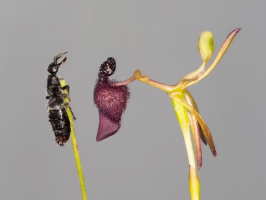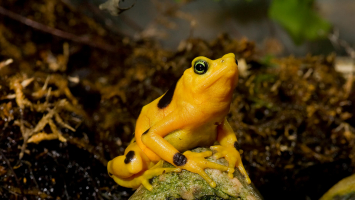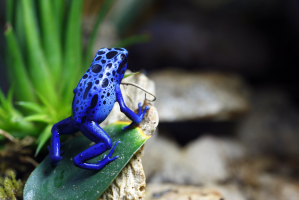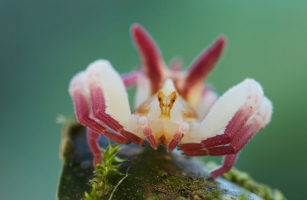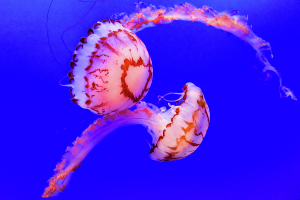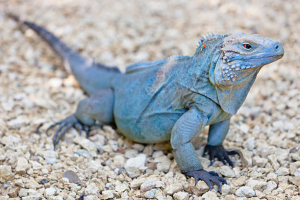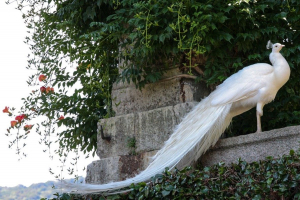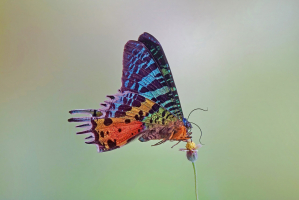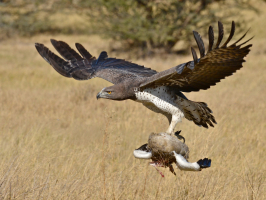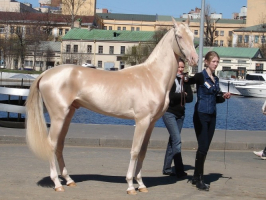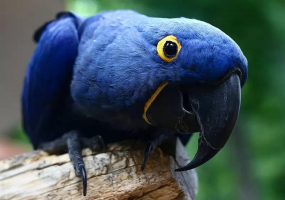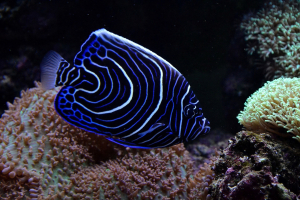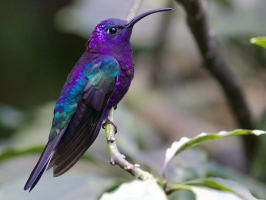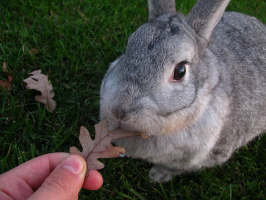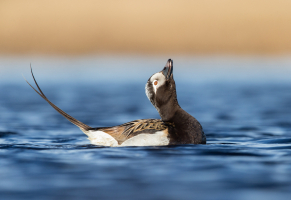Top 10 World's Most Beautiful Pink Animals
The majority of pink animals are extremely beautiful that enhances the beauty of nature. The eye-catching pink colors attract the eyes of everyone around, but ... read more...it will not be easy for you to come across these colored animals in everyday life. Below are the most beautiful pink animals in the world, let's find out!
-
The Pygmy Seahorses comprise several species of tiny seahorse in the syngnathid family or Syngnathidae (seahorses and pipefish). Family Syngnathidae is part of the order Syngnathiformes, which contains fishes with fused jaws that suck food into tubular mouths. They are found in Southeast Asia in the Coral Triangle area. They are some of the smallest seahorse species in the world.
The pygmy seahorse is small and expertly concealed. Among the seagrasses, soft corals, or gorgonians (sea fans) it dwells, it is quite challenging to spot. Along with having a fleshy head and body, a very short snout, and a long, prehensile tail, pygmy seahorses also have these features. They resemble young animals due to their short snouts. Pygmy seahorses have a shorter vertical height when swimming since they are just 14–27 millimeters in length from tip to snout. Adults can grow to a maximum length of 13 millimeters. They used to come in two colors namely pale grey or purple with pink or red tubercles. It is created in such a way that color and shape will be approximately like the corals on which it survives.
THE DEPARTURES CHANNEL 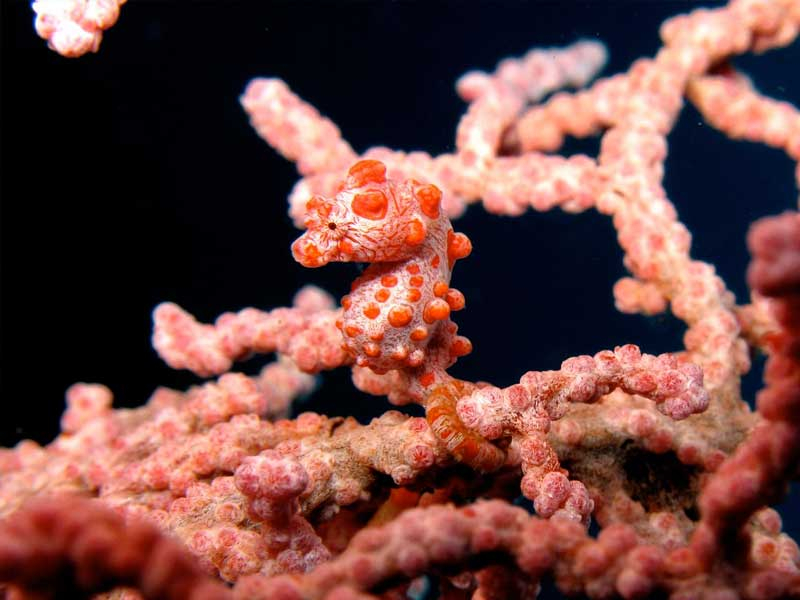
Pinterest -
The gorgeous pink and white mantis is known as the Orchid Mantis, or Hymenopus coronatus, and has lobes on its legs that resemble flower petals. Despite not feeding on orchids, this species surprisingly resembles a flower or an orchid. The species is well-known and adored as a pet due to its stunning brilliant colors and incredible concealment. Malaysia is home to Hymenopus coronatus in the wild.
The orchid mantis is white with pink highlights that might be subtle or overt. Some people are all white, some are entirely pink, while yet others are a bit of a mix. Depending on factors like humidity and light levels, one mantis can change its color in a couple of days. This species' legs have lobes that resemble flower petals. White and pink flowers in bushes and tiny trees make up its native environment. By doing this, the mantis can avoid being spotted by potential predators like birds while also catching pollinating insects drawn to the flowers.
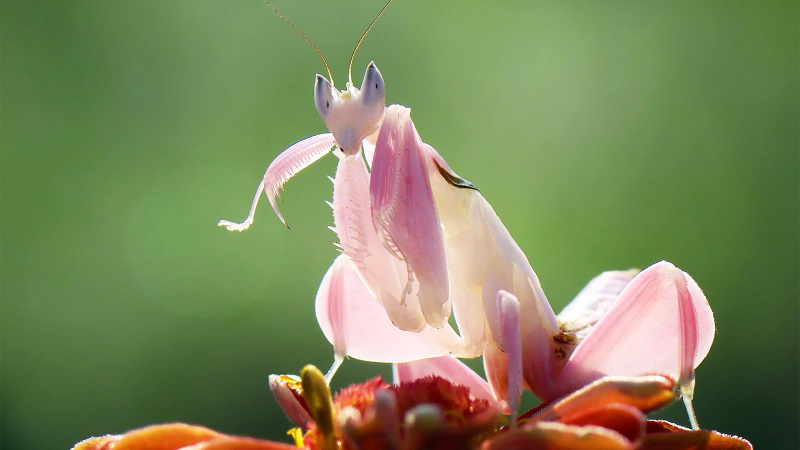
Animals 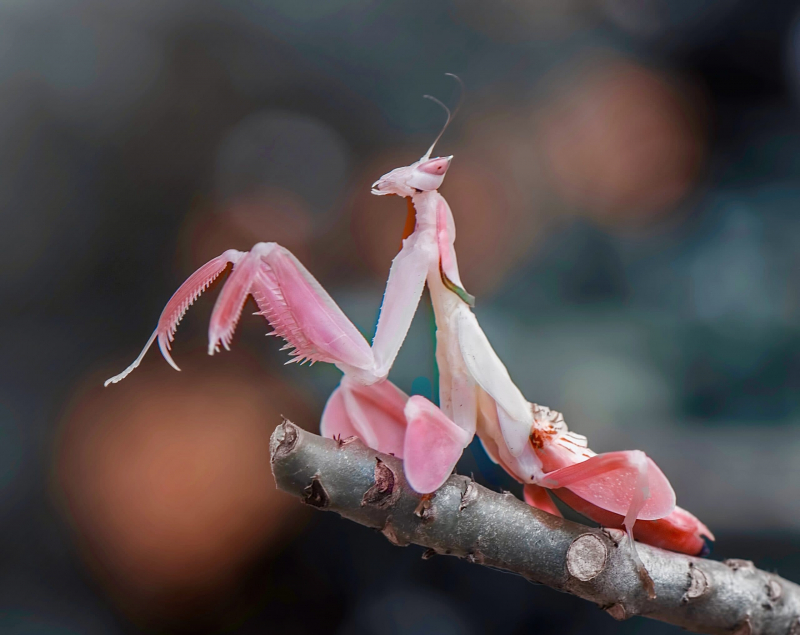
Earth.com -
Deilephila elpenor, the Elephant Hawk Moth or large elephant hawk moth, is a moth in the family Sphingidae. Its common name is derived from the caterpillar's resemblance to an elephant's trunk. It is distributed all over the Palearctic region, with central Europe being its most prevalent location. The Canadian province of British Columbia has also adopted it. It is one of the most recognizable moths in its region thanks to its distinctive olive and pink coloring. However, the little elephant hawk moth, a closely related species that also have distinctive colors, can be mistaken for the elephant hawk moth rather easily.
It is one of the most colorful moths that can mostly see in bronzy green with pink stripes. They can range in various sizes, but their wings span can range between 45mm and 70mm. Due to their nocturnal nature, these moths consume flowers that bloom or produce nectar at night. The elephant hawk moth was one of the first species in which nocturnal color vision in animals was recorded because of its extremely sensitive eyes, which enable it to perceive color even in low light.
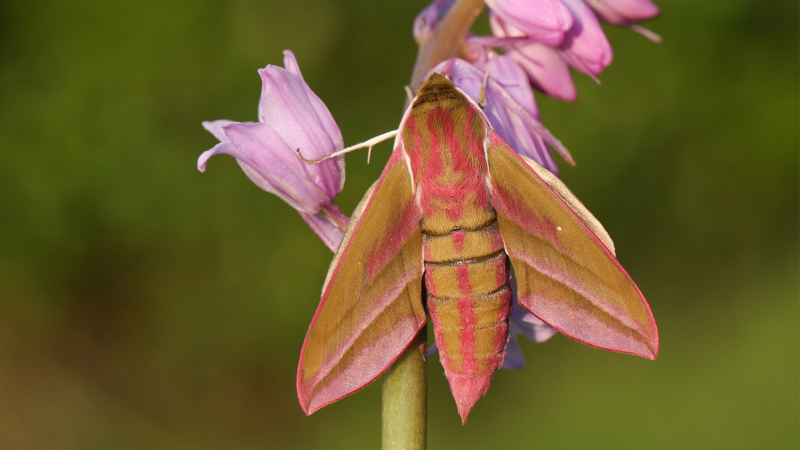
Animals | HowStuffWorks 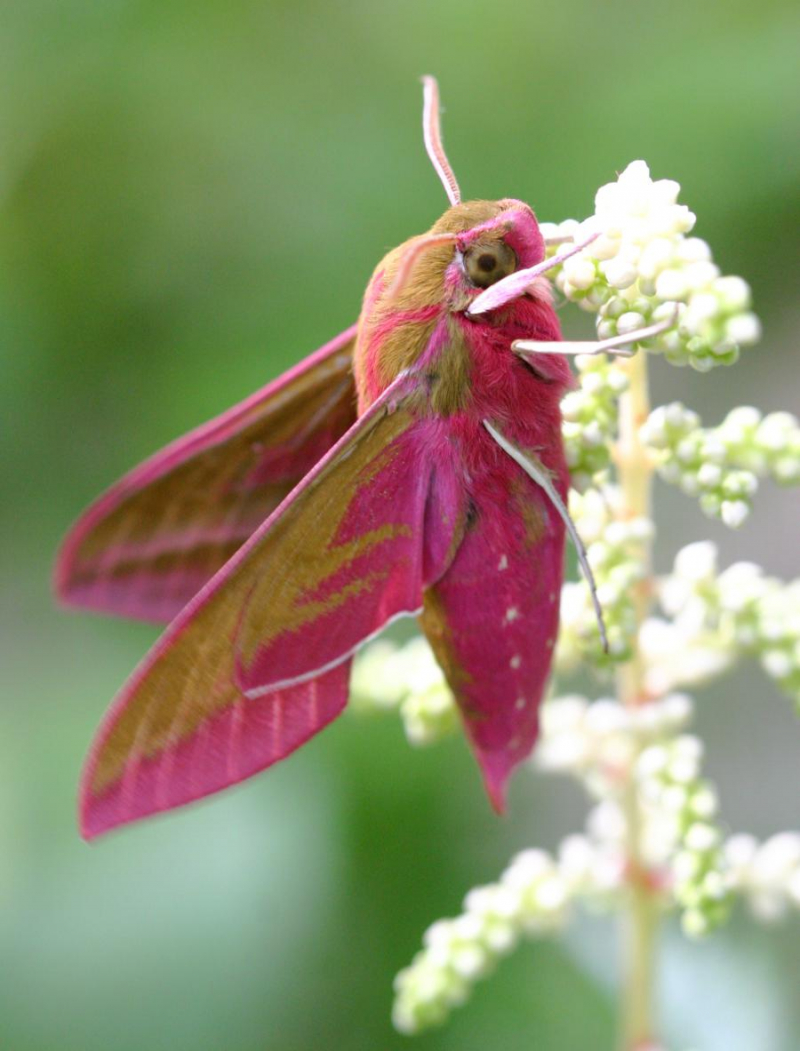
NatureSpot -
The American Flamingo (Phoenicopterus ruber) is a sizable species of flamingo that lives in the Neotropics and is closely related to the greater and Chilean flamingos. It was previously thought to be conspecific with the greater flamingo, but due to a dearth of evidence, this treatment is now widely disregarded (e.g. by the American and British Ornithologists' Unions). Despite being prevalent on the Galápagos Islands as well, it is also referred to as the Caribbean flamingo. It is the only flamingo that lives in North America natively.
Adult American flamingos are smaller on average than greater flamingos but are the largest flamingos in the Americas. Most of its plumage is pink, giving rise to its earlier name of rosy flamingo and differentiating adults from the much paler greater flamingo. The wing coverts are red, and the primary and secondary flight feathers are black. The bill is pink and white with an extensive black tip. The legs are entirely pink. The call is a goose-like honking.
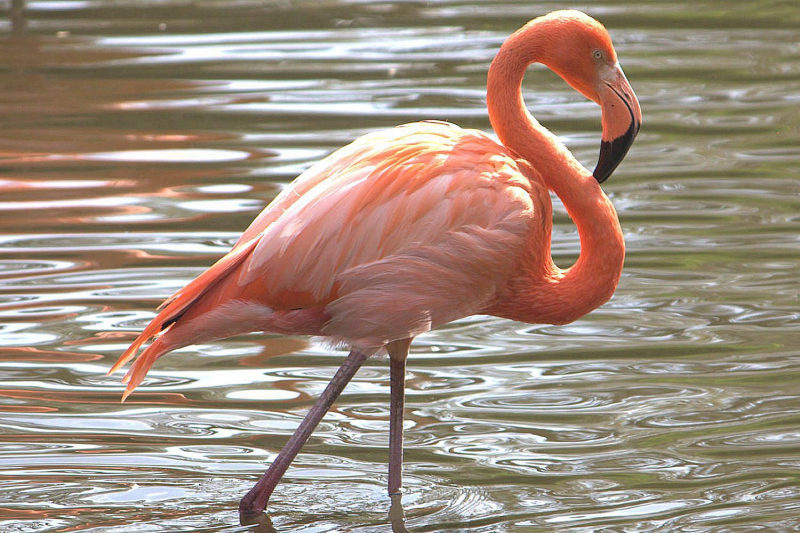
The Spruce 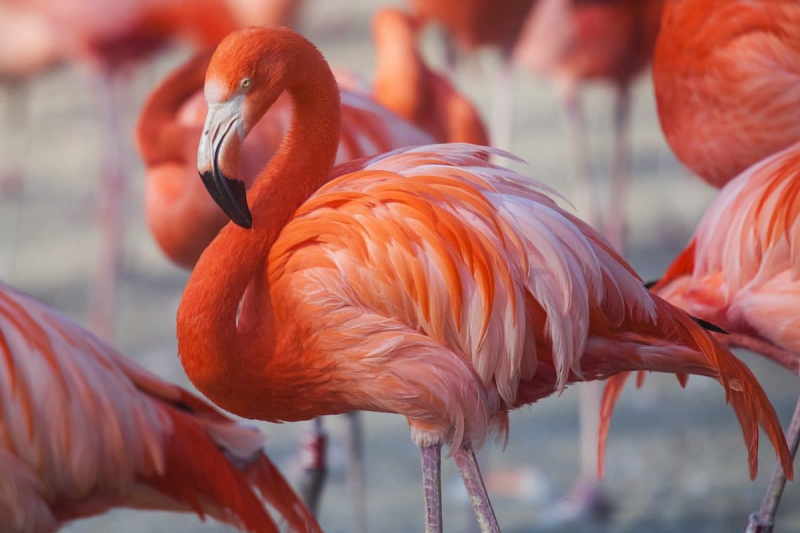
Birds Wiki - Fandom -
The Roseate Skimmer (Orthemis ferruginea) is a species of dragonfly in the family Libellulidae. It is native to the Americas, where its distribution extends from the United States to Brazil. It is common and widespread. It is an introduced species in Hawaii. Although it can survive in a variety of habitats, open water is typically needed. Tanks and ditches are examples of disturbed and man-made water bodies. It may survive on the either bare or forested ground. In the mud, it reproduces.
The species' male has an abdomen that is rose pink and crimson. The female has a brownish thorax with a light stripe along the back, an orange-brown abdomen with clear orange veins, and an orange-brown head. Except for brown pterostigmata at the front edges, the wings are often transparent. Its length ranges from 46 to 55 mm, and its wingspan is 35 to 44 mm. Male roseate skimmers are fiercely territorial, attacking any other males who approach their territory.
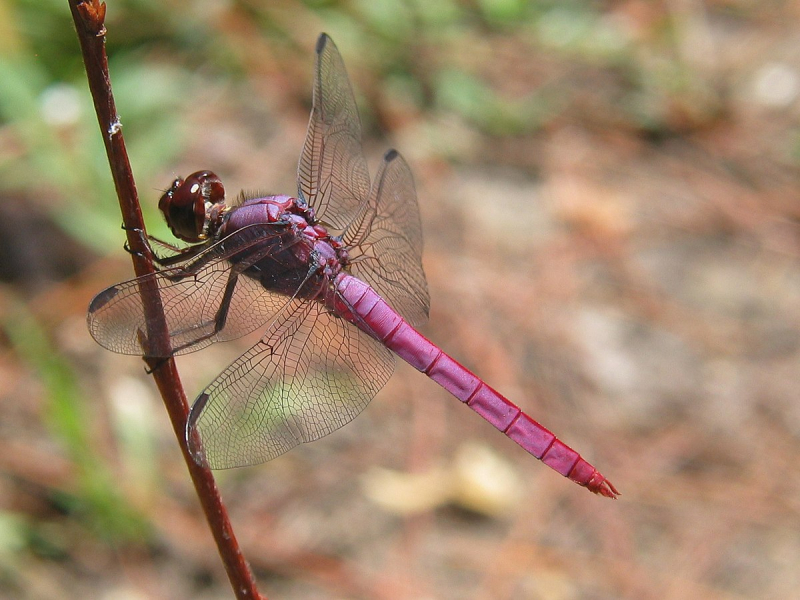
Wikipedia 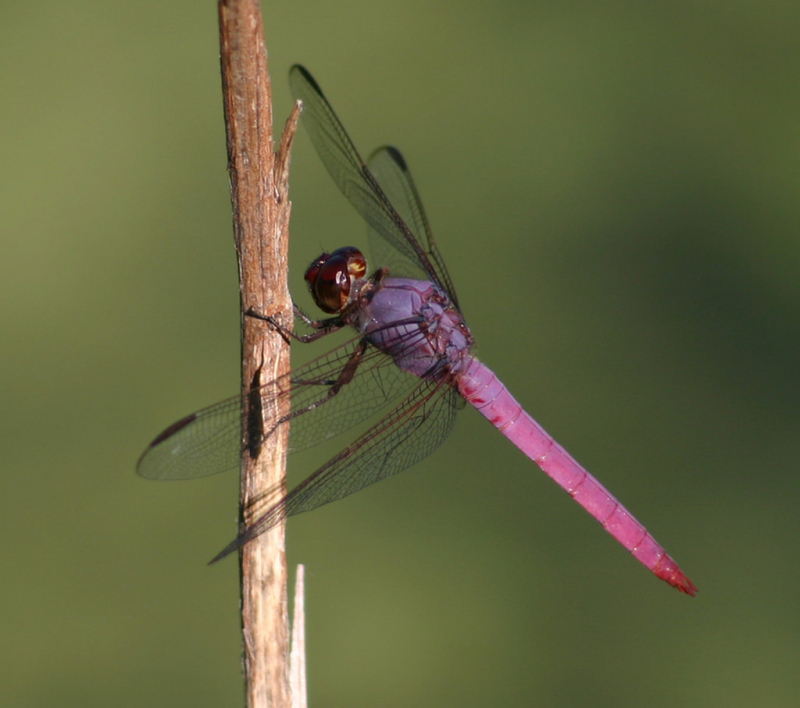
iNaturalist -
Okenia rosacea common name Hopkin's Rose Nudibranch, is a species of sea slug, specifically a dorid nudibranch, a marine gastropod mollusk in the family Goniodorididae. This species was described from Monterey Bay, California. It can be found along the coast of western North America from Oregon to Baja California.
Numerous lengthy papillae that taper into a rounded tip are present on the back of these pink sea slugs. Sometimes, the tips of these papillae are more or less white. Hopkinsiaxanthin, a xanthophyllic pigment that is most likely derived from feeding on the cheilostomatous bryozoan Integripelta bilabiate, is responsible for this pink tint. The mantle, foot, and head are combined into a single object with a lowered profile. There are no oral tentacles. The 20 gills are a little bit shorter and are located close to the anal papillae. The middle tooth of the taenioglossan radula is the largest and longest tooth in this family, and it ends in a hook-like tip, making it distinct from other radulae. The lateral teeth are little and have actually been simplified to a simple plate.
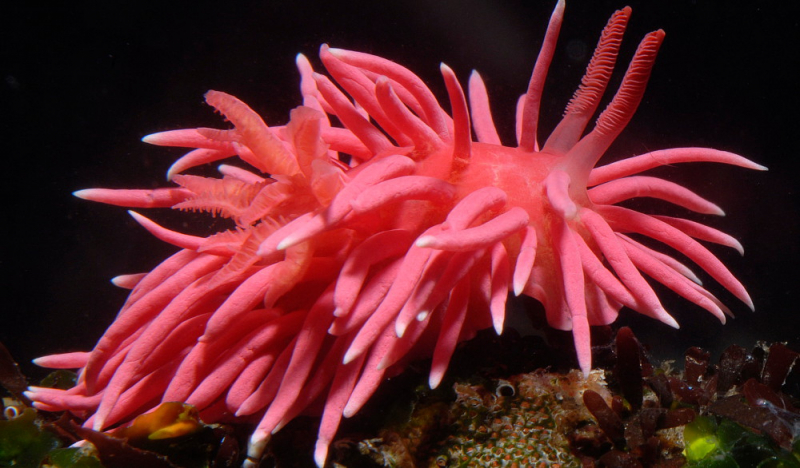
Science Friday 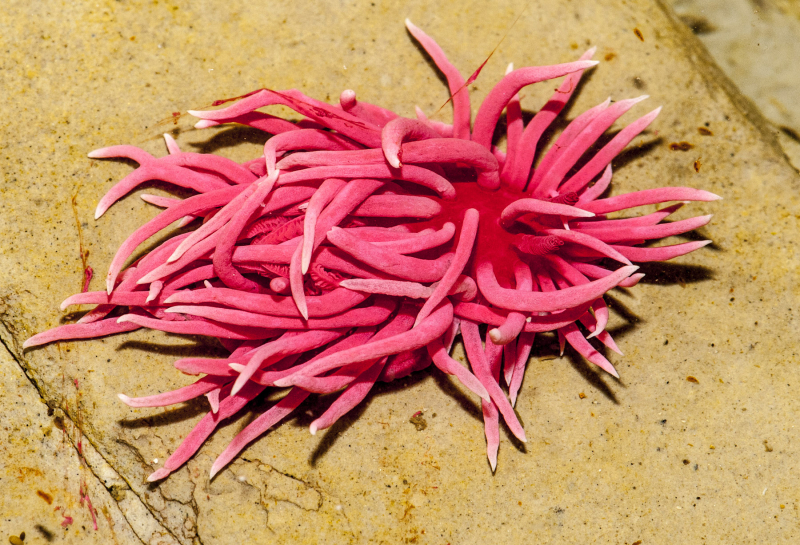
Wikipedia -
The Pink Amazon Dolphin, also known as the pink river dolphin, can be found in all of the Amazon river basins in Bolivia, Brazil, Colombia, Ecuador, Guyana, Peru, and Venezuela. It only inhabits freshwater. The Amazon river dolphin is the largest species of river dolphin, with mature males growing to a length and weight of 2.5 meters (8.2 feet) and 185 kilograms (408 lb), respectively.
The moniker "pink river dolphin" comes from the pink tint that adults develop, which is more pronounced in males. Males are 16 percent longer and weigh 55 percent more than females, making sexual dimorphism quite obvious. They consume up to 53 different types of fish, including croakers, catfish, tetras, and piranhas, making them one of the toothed whales with the most varied diets. They also eat other creatures like freshwater crabs and river turtles. Despite being protected in Brazil, poachers relentlessly kill dolphins for their fatty blubber, which is then used as bait to catch predatory catfish. As a result, the dolphin population continues to halve every ten years and is currently classed as an endangered species by the IUCN.
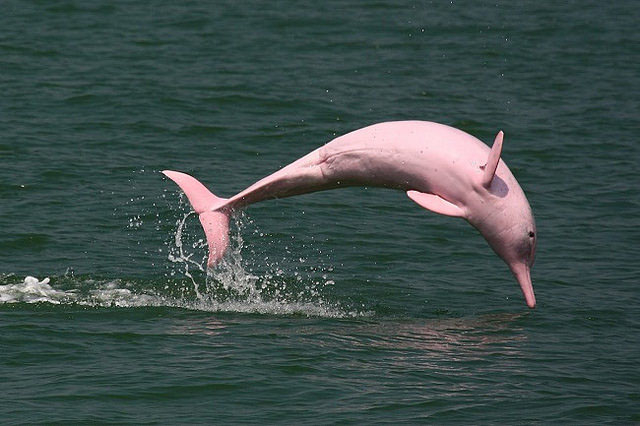
Galapagos Insiders 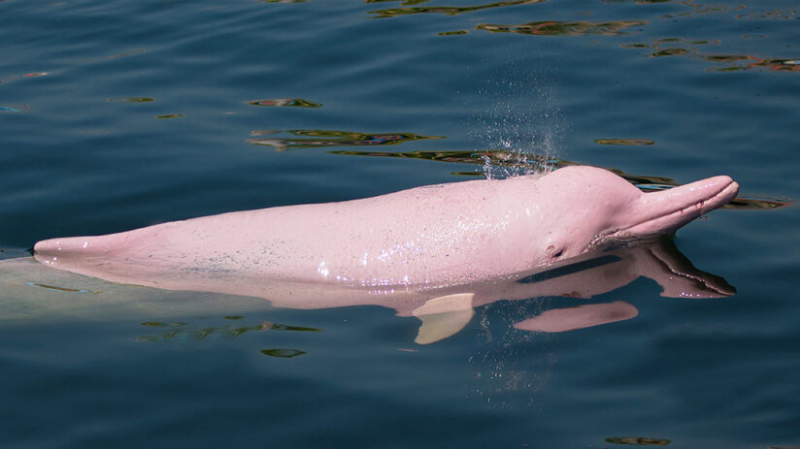
World Wildlife Fund -
The Roseate Spoonbill (Platalea ajaja) is a sociable wading bird belonging to the Threskiornithidae family of ibis and spoonbills. It is a perennial breeder in both South and North America. This species eats in shallow fresh or coastal waters by steadily walking through the water and swinging its bill from side to side, frequently in groups. It can sift through the mud with ease thanks to its spoon-shaped bill. It consumes crustaceans, aquatic insects, frogs, newts, and extremely small fish that larger waders ignore.
The roseate spoonbill weighs 1.2–1.8 kg and measures 71–86 cm in length with a wingspan of 120–133 cm. Adults have a dark pink tint with a white neck, back, and breast. Adults have a deep pink color with a naked greenish head (which turns golden buff while breeding) and a white neck, back, and breast (which has a tuft of pink feathers in the center when breeding). The statement is gray. There is no obvious sexual dimorphism. Canthaxanthin, a carotenoid pigment, is what gives them their pink color, just like the American flamingo. A separate carotenoid called astaxanthin is also deposited in body and flight feathers. The hues can range from pale pink to vibrant magenta according to age, breeding status, and area. Unlike herons, spoonbills fly with their necks outstretched.
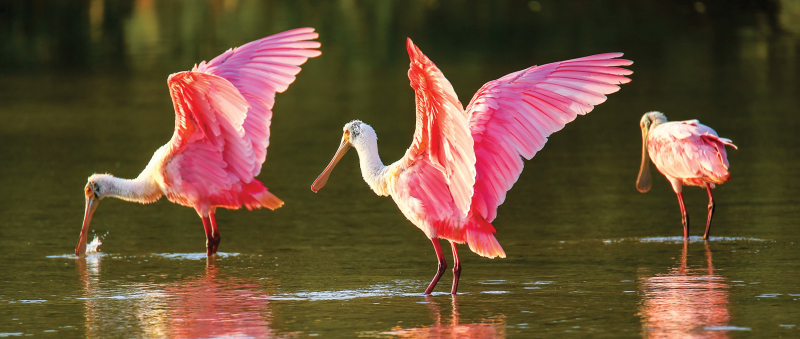
Jekyll Island 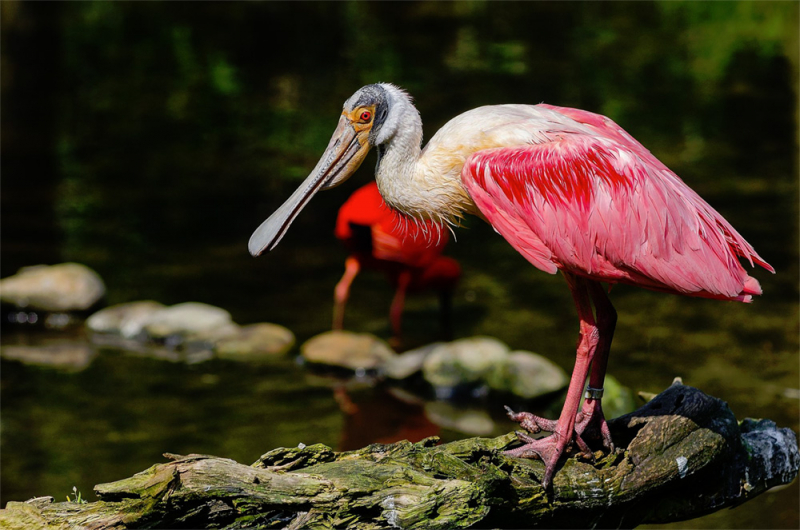
Birdwatchersdigest -
Pisaster brevispinus, commonly called the Pink Sea Star, giant pink sea star, or short-spined sea star is a species of sea star in the northeast Pacific Ocean. It was first described to science by William Stimson in 1857. The type specimen was collected on a sandy bottom, 10 fathoms (18 m) deep, near the mouth of San Francisco Bay.
The pink sea star has a sizable core disc and five thick limbs. One of the world's biggest sea stars is this one. While typically having a diameter of 320 millimetres, monsters up to 90 centimetres have been found. The heaviest creatures might weigh 4.5 kg. This star's upper, aboral surface is typically pink, occasionally with grey hints. The arms' radius ranges from 2.8 to 5.0 times that of the disc. The pink sea star is a carnivore and scavenger. Its main prey is bivalves. It hunts, captures, and eats cockles, including Nuttall's cockle, butter clams, jackknife clams, horse clams, littleneck clams, and geoduck clams. How it locates buried clams is unknown, but once it finds a buried clam it will dig down to it by using its tube feet to push bits of sediment from near its mouth to the ends of its arms. Holes as deep as 10 centimetres have been observed.
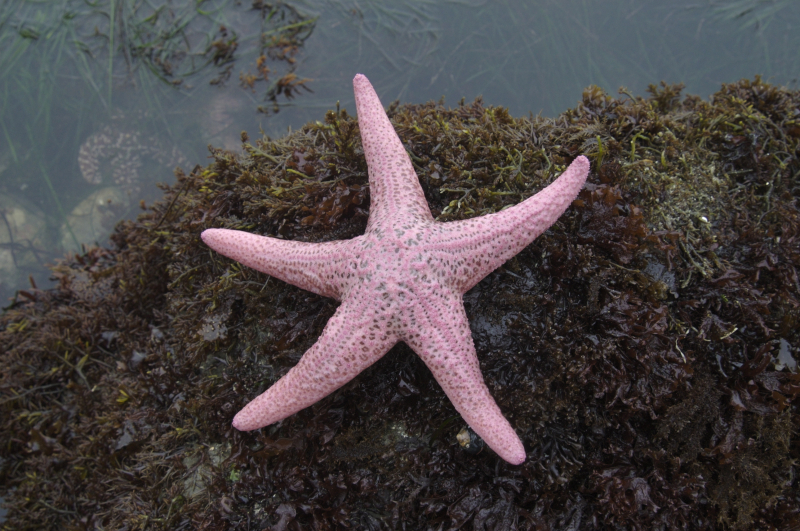
Wikipedia 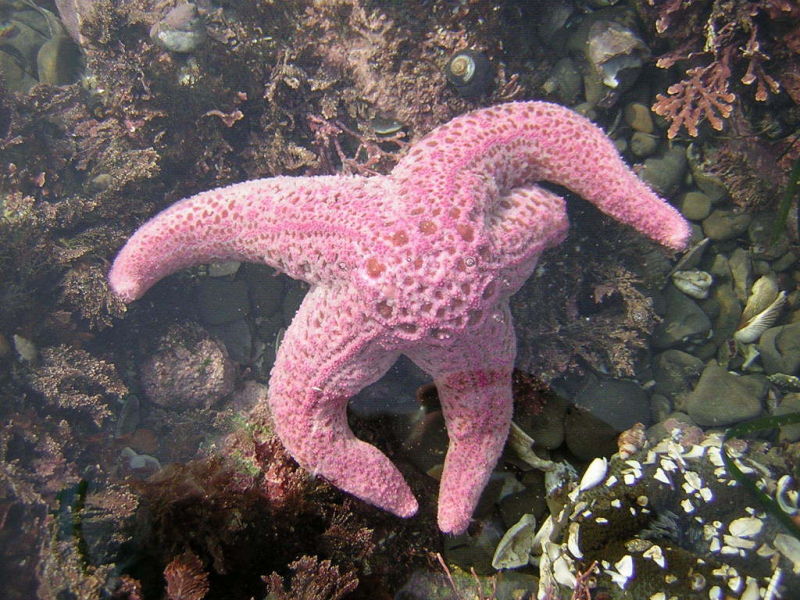
iNaturalist -
Pink Robins, a little passerine bird found in Southeast Australia (Petroica rodinogaster). Its native habitat is the lonely, temperate woods of southeast Australia. It has sexual dimorphism, like many other vibrantly colored Petroicidae robins. The robin is a little, thin-billed bird with dark brown eyes and legs that measures 13.5 cm in length. The male has a pink breast, a distinctive white mark on his forehead, and black wings and a tail on top of his grey-black upper body. The belly is white. Gray-brown describes the female's feathers.
The pink robin and its Australian relatives are not closely related to either the European or American robins, but rather appear to be an early branch of the Passerida group of songbirds, hence its position on the passerine family tree is unknown. September through January are the breeding months. The nest is a clean, deep cup constructed of moss. The nest is often built in a tree fork up to 5 meters (15 feet) above the ground using spider webs, feathers, and hair for binding or filling. There is a clutch of three to four eggs laid. The 18 by 14 mm-sized eggs are characterized by dark brown and lavender splotches and spots, which are typically concentrated near the large end. They are also greyish, greenish, or blueish white.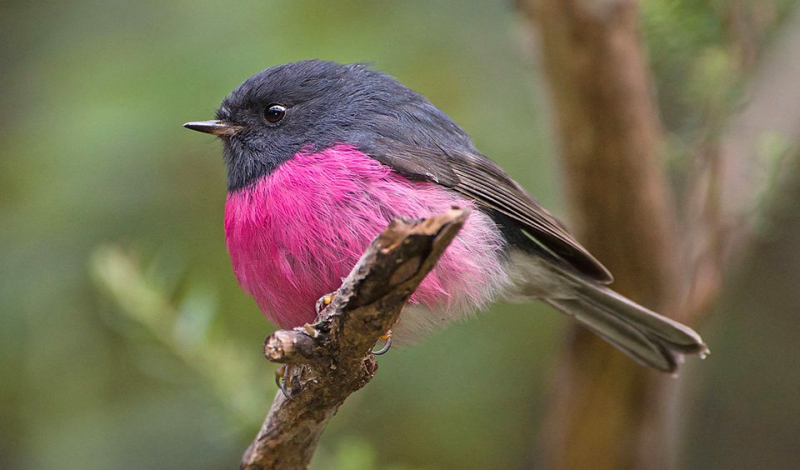
Australian Geographic 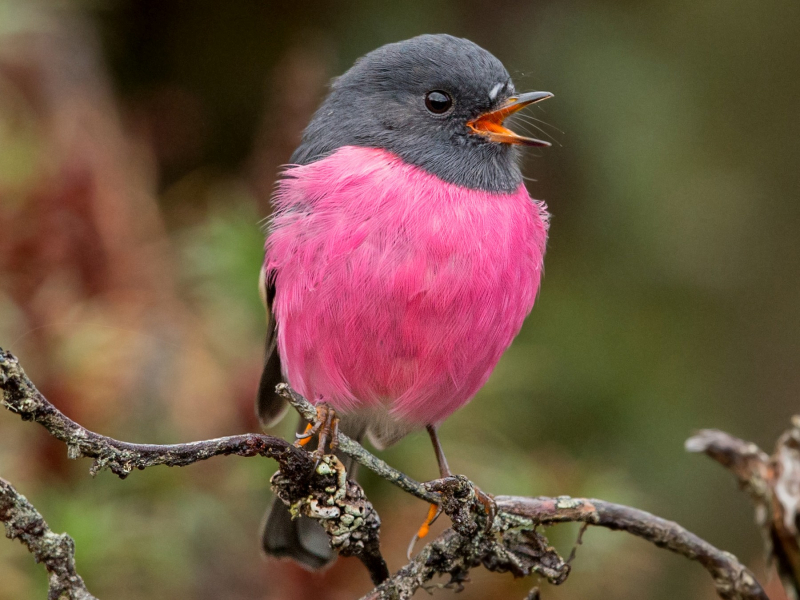
eBird












